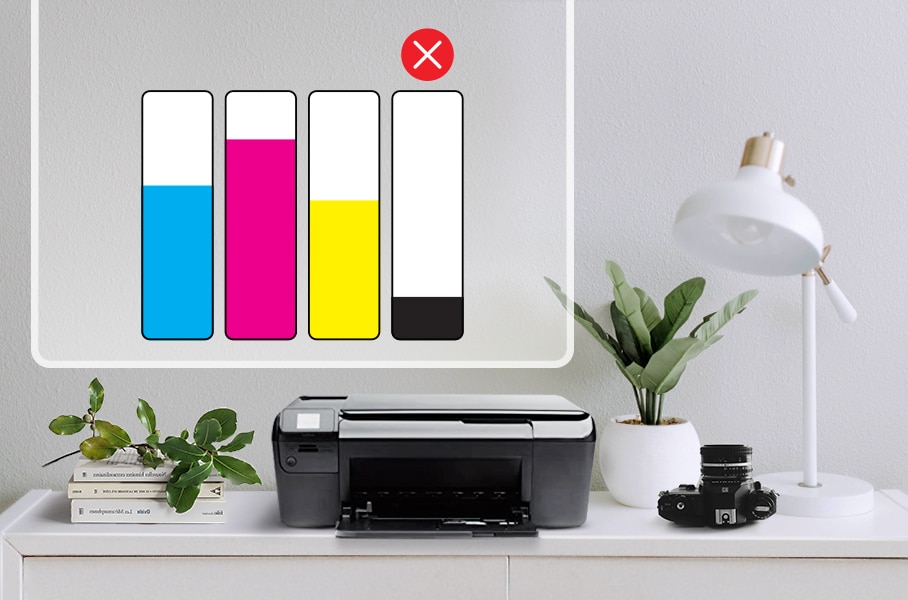Printers are essential tools for both home and office environments. Whether you’re printing documents, photos, or projects, running out of ink at the wrong moment can be incredibly frustrating. To avoid such interruptions, it’s important to regularly check your printer’s ink levels. This comprehensive guide will teach you everything you need to know about checking printer ink levels, regardless of your operating system or printer brand.
Why Checking Ink Levels Is Important
Monitoring your ink levels isn’t just about avoiding unexpected empty cartridges. Here are a few important reasons why regular checks are beneficial:
- Prevent Printing Interruptions: Running out of ink mid-print can waste paper and time.
- Maintain Print Quality: Low ink levels can result in faded or streaky prints.
- Protect Your Printer: Some printers can suffer from damage if they continue to print with dry ink cartridges.
- Plan Ahead: Checking levels helps you reorder ink before it’s completely gone.
How to Check Ink Levels in Windows
Windows users have several ways to check ink levels depending on the printer brand. Here’s a general method, followed by brand-specific instructions:
General Method via Control Panel
- Open the Control Panel.
- Navigate to Devices and Printers.
- Right-click your printer and select Printing Preferences or Properties.
- Look for a Maintenance, Services, or Tools tab.
- Click View Printer Status, Status Monitor, or a similar option.
This method works for many modern printers. If you don’t see your ink levels here, try using your printer’s dedicated software.
Brand-Specific Tools for Windows
HP Printers
- HP Smart App: Downloadable from the Microsoft Store. It displays ink levels on the homepage.
- HP Print and Scan Doctor: A free diagnostic tool that checks ink levels, among other functions.
Canon Printers
- Canon IJ Status Monitor: Accessed through the printer driver under the Maintenance tab. It shows ink levels with detailed visuals.
Epson Printers
- Epson Status Monitor: Available through the Epson printer utility. It provides an easy-to-read graphical representation of ink levels.
Brother Printers
- Brother printers typically show ink levels in the Status Monitor, accessible through the printer software or control panel.
Lexmark Printers
- Open the Lexmark Printer Utility, then click on the Cartridges tab to view ink levels.
How to Check Ink Levels on macOS
Mac users can check ink levels using built-in system tools. Here’s how:
- Go to System Preferences > Printers & Scanners.
- Select your printer from the list.
- Click Options & Supplies.
- Go to the Supply Levels tab.
If your printer is supported, ink levels will appear here. For more detailed information, use the printer’s proprietary macOS software.
Checking Ink Levels Directly on the Printer
Many modern printers have built-in screens or displays that allow you to view ink levels without needing a computer.
Steps to Check On-Screen Ink Levels:
- Turn on the printer.
- Use the menu button to navigate to Ink, Ink Management, or Tools.
- Select the Ink Levels option.
The printer display will show either a graphical representation or percentage levels of each cartridge. Some brands also provide messages or notifications when ink is low.
Using Printer Software and Apps
Nearly all major printer manufacturers offer dedicated apps or software that include ink level monitoring. Here are some of the best tools available:
HP Smart
- Available for Windows, macOS, Android, and iOS.
- Displays real-time ink levels.
- Also includes print, scan, and diagnostic tools.
Canon PRINT Inkjet/SELPHY
- Supports iOS and Android devices.
- Displays ink levels and allows remote printing.
Epson iPrint
- Available for smartphones and tablets.
- Displays ink levels and supports mobile printing.
Brother iPrint&Scan
- Free app that shows ink/toner levels, device status, and more.

Indirect Signs That You’re Running Low on Ink
Sometimes you may notice signs of low ink before receiving an official warning. Here’s what to watch for:
- Faded Prints: Black or color output looks light or patchy.
- Streaky Lines: Horizontal or vertical lines across the page.
- Missing Colors: Certain shades may not print at all.
- Printer Alerts: Some printers will flash an LED light or display a low-ink message.
If you notice any of these symptoms, check your ink levels immediately and consider replacing the cartridge.
What If You Can’t Find Ink Level Information?
Some older or basic printers don’t support ink monitoring. If that’s the case:
- Print a Test Page: Most printers let you print a diagnostic page which often shows ink usage.
- Estimate by Use: If you print frequently, it might be time to replace cartridges after a certain number of pages.
- Open the Printer: Physically inspect the cartridge (though this may not be very accurate).
Frequently Asked Questions (FAQs)
1. Can I check ink levels without a computer?
Yes. Most modern printers have a built-in display screen with a menu option to check ink levels.
2. Will third-party ink cartridges show ink levels?
Some third-party cartridges may not report accurate ink levels. If ink levels aren’t displayed, monitor your prints for signs of low ink.
3. Can I still print if ink levels are low?
Yes, but print quality may suffer. Also, some printers stop printing entirely when they detect low ink, to prevent damage.
4. How often should I check ink levels?
Check ink levels every couple of weeks or before printing important documents or large projects.
5. Can software give false ink readings?
Sometimes. Software may misread levels, especially with third-party or refilled cartridges. Physical print quality is usually the best indicator.
Best Practices for Managing Ink Levels
Here are a few expert tips for managing your ink effectively:
- Keep a spare cartridge on hand to avoid last-minute shopping.
- Store cartridges properly—upright and in a cool, dry place.
- Use genuine cartridges when possible for better accuracy and performance.
- Don’t let cartridges run dry—printing with empty tanks can harm the printhead.
- Run maintenance tools (cleaning and alignment) periodically.
Video
Conclusion
Knowing how to check printer ink levels is a basic but essential skill that saves time, prevents frustration, and ensures high-quality prints. Whether you’re using a Windows PC, Mac, or checking directly on the printer itself, there are multiple ways to stay informed about your ink status. Use brand-specific apps and utilities for the most accurate readings, and always watch for print quality issues that may signal low ink.
Stay ahead of the game by monitoring ink levels regularly, and you’ll enjoy smooth, uninterrupted printing every time.
Read More: How to Install a Network Printer: A Step-by-Step Guide for Windows and macOS Users
